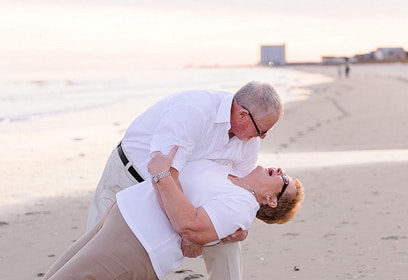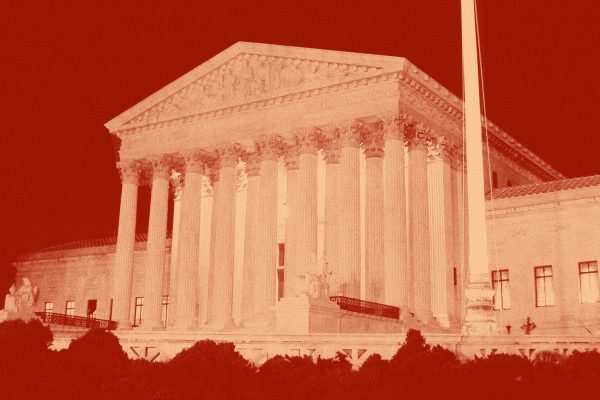The saddest part, the most infuriating part, of the trial of Henry Rayhons is that he had to plead not-guilty and testify that all he had done that night was kiss, hold hands, and pray with his wife.
Rayhons is the seventy-eight-year-old former Iowa legislator who was recently tried for felony sexual abuse of his now-deceased wife, Donna, while she was in a nursing home with Alzheimer’s. He faced ten years in prison if convicted.
When the alleged offense occurred, the couple, both widowed, had been together seven years. They were still buzzing with early-relationship randiness. Even at the nursing home, according to Henry, Donna liked to unzip his pants and fondle him.
Then, at the behest of Donna’s daughters—who had put her in the home, perhaps against Henry’s wishes—a doctor concluded their mother was incapable of consenting to sex. The home’s administration ruled her off limits to Henry’s erotic touch. A week later, Donna’s roommate heard what she though were “sexual” noises from behind Donna’s privacy curtain during Henry’s visit. She reported her suspicions to the administration, who reported him to the police.
Henry endured hours of humiliating interrogation, by investigators and at last month’s trial. Did he take his penis out of his pants? Did he ejaculate or just “leak”? Did he touch Donna’s breasts, anus, or vagina? During an interrogation, he admitted to putting his penis “two or three inches” inside her vagina—a confession he said he made under duress, and recanted in court.
The jury acquitted him, but only because the prosecution couldn’t prove guilt. There was no opportunity to argue that a person could still desire and enjoy sexual pleasure without a rational brain, comprehensible speech, or the ability to feed herself.
One report on purported elder abuse describes victims as dependent captives “in highly sexualized environments.” Assisted living?
The Rayhons’s ordeal was not the first example of overzealous protection of the supposedly defenseless and asexual aged, nor will it be the last. In 2009, a Massachusetts bill sought to amend the state’s child pornography law to include the disabled and people over sixty among those statutorily unable to consent to posing nude or performing sexually before a camera. The photographer could be lover, artist, or spouse. But if the image was created with “lascivious intent,” the offender faced a mandatory minimum of ten years in prison or $10,000 in fines.
The bill’s lead sponsor, thirty-eight-year-old Democratic Representative Kathi-Anne Reinstein—also author of a proposal to make the Fluffernutter the state sandwich—told the Boston Herald that advocates had informed her “elder exploitation and pornography [were] on the rise.” She called her bill (which, thankfully, failed) a “no-brainer.” This assessment, I commented at the time, was indisputable.
Where have we heard all this before? A hidden sexual scourge is revealed. Sex considered consensual by its participants is redefined as coercion. A newly discovered predator—the pedophile, the “gerontophile”—exhibits impulses far outside erotic and moral norms, yet rare as he must be, his numbers are inexplicably mounting. There is a cry for vigilance and prosecution.
Poking around the Internet for the literature on “elder sexual abuse,” I found a familiar name: Ann Burgess, a nurse and early clinician in rape response, who was one of a few dozen people chiefly responsible for America’s child abuse hysteria. In 1981 Burgess confected, out of anecdote, innuendo, and a couple of facts, a secret network of organized criminal “child sex rings,” which she said were purveying child prostitutes—at that time, mostly gay boys, to adult men. Police, prosecutors, and the press seized on this exciting idea and haven’t let it go, though closer examination almost always reveals nothing more than a Website owner or two, or a couple of underage street hustlers crashing at an adult’s apartment. Burgess’s book is still, tellingly, pretty much the only source on the subject.
The invention of the child sex ring landed Burgess on the founding board of the American Professional Society on the Abuse of Children, whose leadership comprised “a veritable directory of ritual abuse [hysteria] architects,” as Debbie Nathan and Mike Snedeker wrote in their 1995 book Satan’s Silence. According to Burgess’s bio in a recent elder sexual abuse manual, she had by 2004 “co-authored over 135 articles and chapters in rape victimology,” including monographs on child sex rings, child molesters and abductors, and infant abductions—all of whose prevalence she and her colleagues have exaggerated to appear legion.
The similarities to sex hysterias past and present—white slavery, satanic abuse, child pornography, sexting—become even more striking when we turn to the articles Burgess has been producing since 1974 on this new “subgroup” of victims. One recent article, published in a geriatrics journal and based on a report funded by the U.S. Department of Justice, begins by stating that “evidence exists” of sexual assaults of elderly people. What evidence?
Few sexual assault cases of victims over sixty are reported, and only 1 percent of reported elder abuse involves sex, both the article and the report note. Still, the crimes’ “scope [and] prevalence . . . are relatively unknown,” because “all statistics . . . are believed”—by whom we are not told—“to be serious underestimates.” The victims are described as dependent captives “in highly sexualized environments” (assisted living?), preyed upon by “sex offenders,” whose aggressions have “a propensity to escalate.” No evidence is offered of this claimed propensity.
As in the field of child sexual abuse, broad definitions already threaten to confound any findings on elder abuse. Studies Burgess cites define “elderly” as anyone over fifty, or over fifty-five; another study takes in victims between forty and sixty-one. Other statistics seem intended to raise alarm: the geriatrics journal article notes that eleven of the twenty elderly nursing home-dwelling victims whose cases Burgess reviewed died within a year of the abuse, a suggestion, she says, of extreme trauma. But this is the same mortality rate as all old people who go into nursing homes. Alzheimer’s patients die even faster.
Burgess’s report ends with urgent recommendations for “guidelines and protocols,” “treatment interventions,” forensics, metrics, data collection—and prosecution. Adult protective services and therapists, criminal justice actors and lawmakers must come together to protect these victims from exploitation, even if they don’t feel victimized.
The questions of informed consent for people ethicists and lawyers call “incapacitated,” such as Donna Rayhons, are neither trivial nor simple. I know. My father had Alzheimer’s for about fifteen years, and like Henry Rayhons and Donna’s daughters, my mother and I struggled over whether to institutionalize him. I was against it and she—his primary caregiver, exhausted, embittered, and beginning to enjoy life with a new beau—was for it.
Did he want to go? He did not. Should we inform him before moving him? No, she said. He won’t understand; he’ll resist. If he doesn’t understand, it’ll be easier, I said. If he resists, he has a right to. He might be happier there, she suggested hopefully. I kept insisting, without really knowing, that he would not.
What was best for him? Did his desires matter? Everyone’s interests clashed. Whose were more important? In fact, even Dad’s interests at the time were incongruent with wishes and values he’d codified in an advanced directive, when he was compos mentis. Basically, it said that if he lost the capacity to speak meaningfully, recognize his loved ones, or live independently, he’d rather die. Yet this was precisely the state he was in. And arguably, he was enjoying life no less than the day he signed the document.
My father had lost much of what he loved: reading, arguing, tennis, clarinet. My parents had had a sexy relationship. But when he became weak and infantile, my mother recoiled from him. So he lost that too. Still, he had pleasures: music, food, walking—and touch. What remained was his emotional, sensual self.
Amazingly, he didn’t lose his sexual self-confidence. He was, as always, gallantly lewd. He never groped anyone, but he came onto everyone, from the other wrinkled members of his “memory loss” daycare to the snooty sylphs at the reception desks of the Chelsea galleries near his apartment. I got a vindictive thrill witnessing their panicked attempts at rebuffing his flirtations.
In the nursing home, my father was bathed and shaved, his back rubbed on occasion. But he was also tranquilized—“managed.” The staff addressed him like a baby. He stopped flirting. Mostly he slept.
Had some aide come in and touched his genitals, who knows, he might have enjoyed it. Or not. All I know is that amid the coercions he endured and the personal agency he ceded, that “exploitation” would have been the least of it.
Just as the obsession with child sexual abuse eclipses every other pain to which children are subjected—from poverty to punishment for their sexual explorations—a new hysteria over sexual exploitation can masquerade as concern for the elderly, while we continue to disrespect and neglect them. It will certainly suck resources away from other needs. And in “protecting” the demented, we may end up taking away one of their last pleasures, the last memories of a beloved self.








